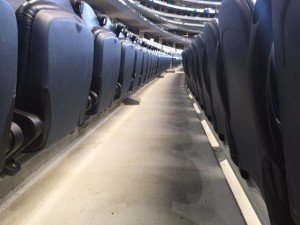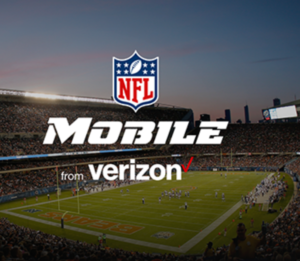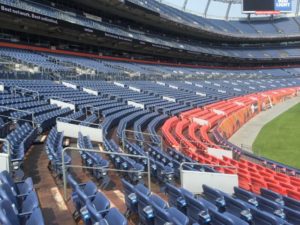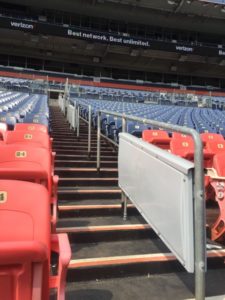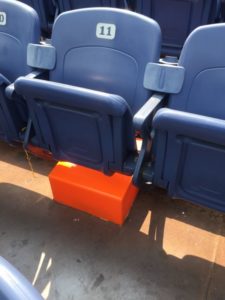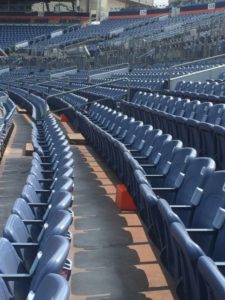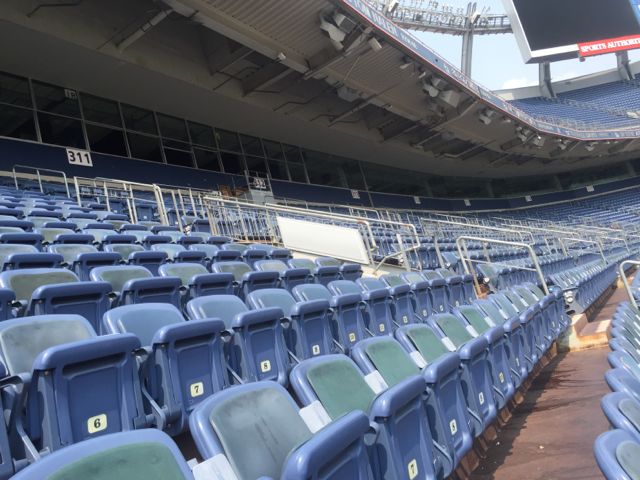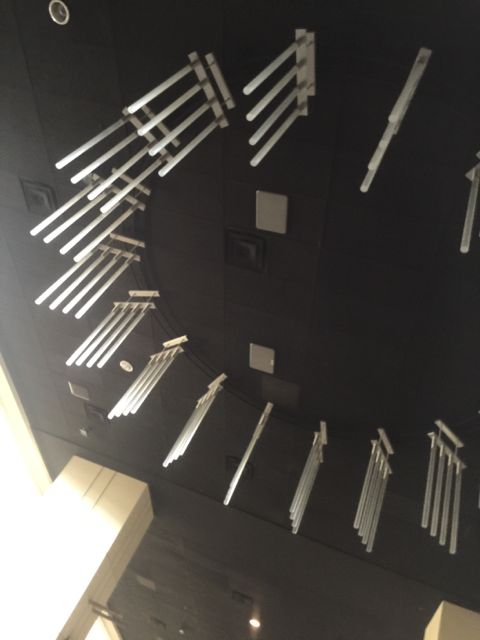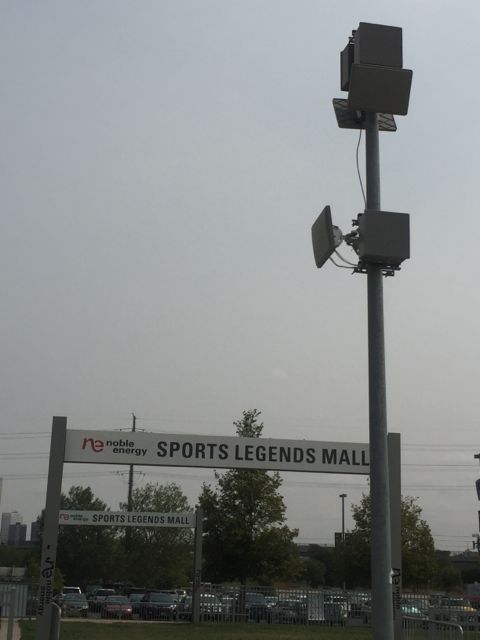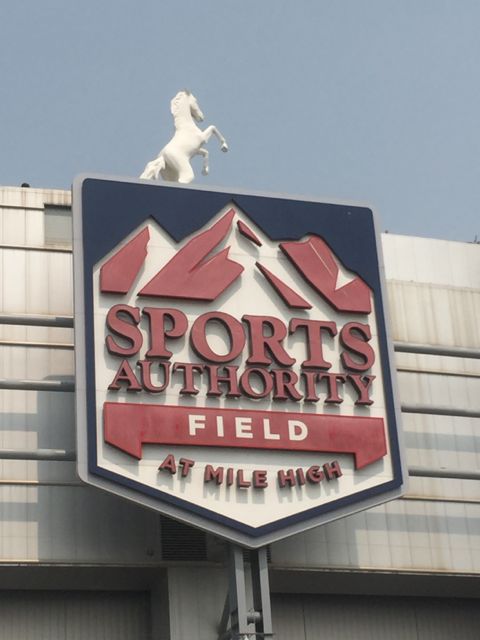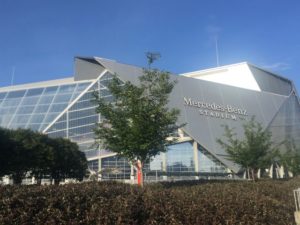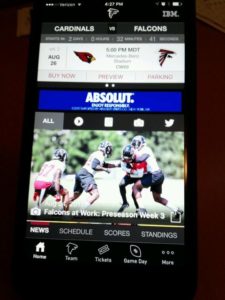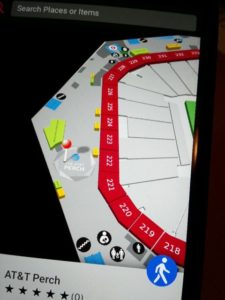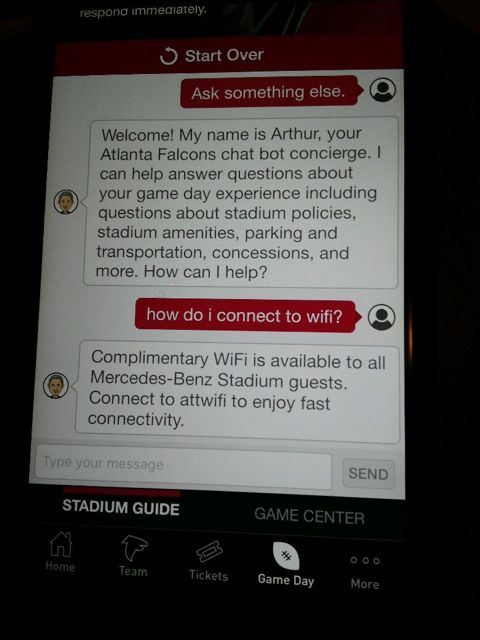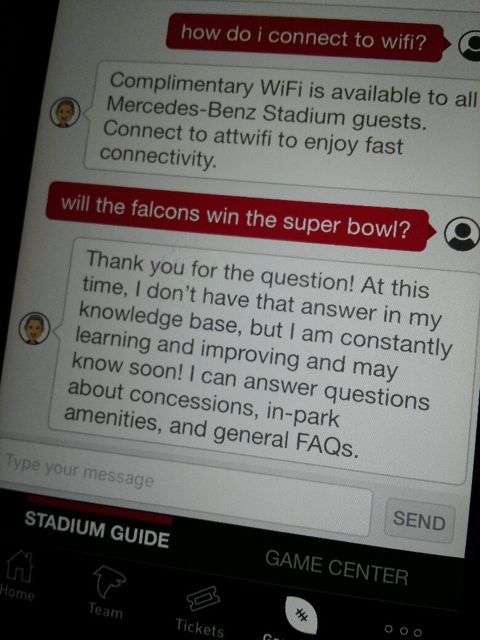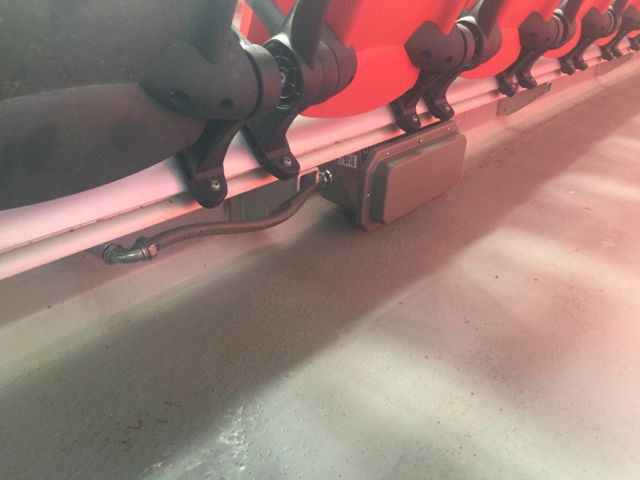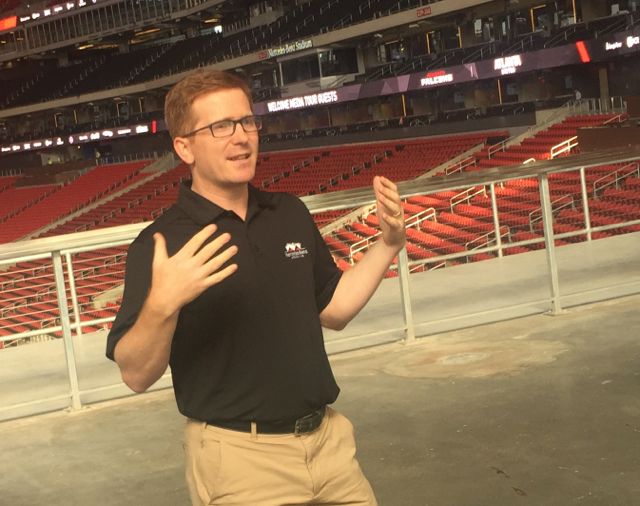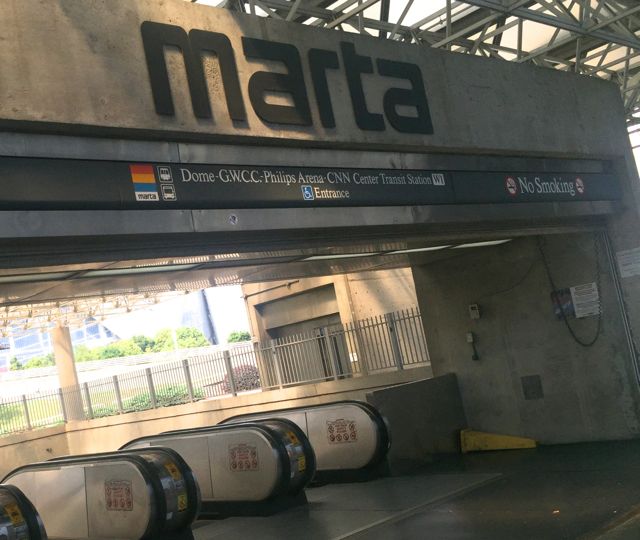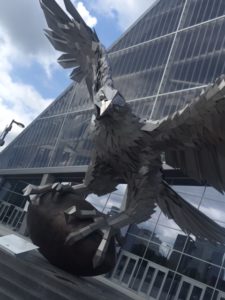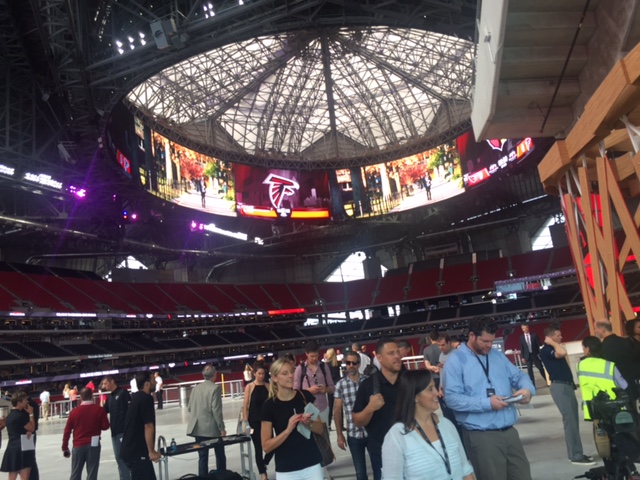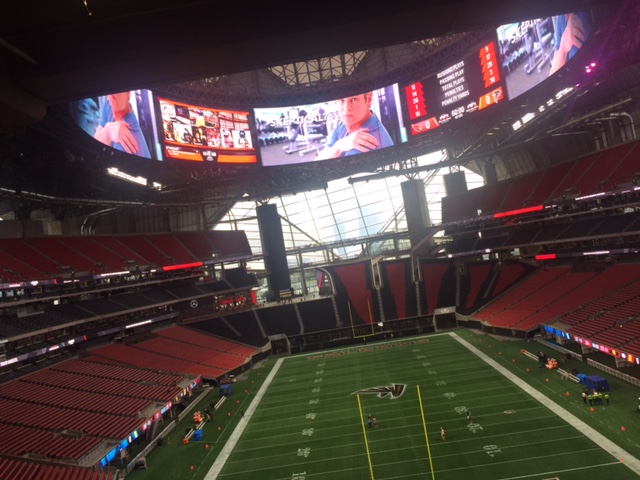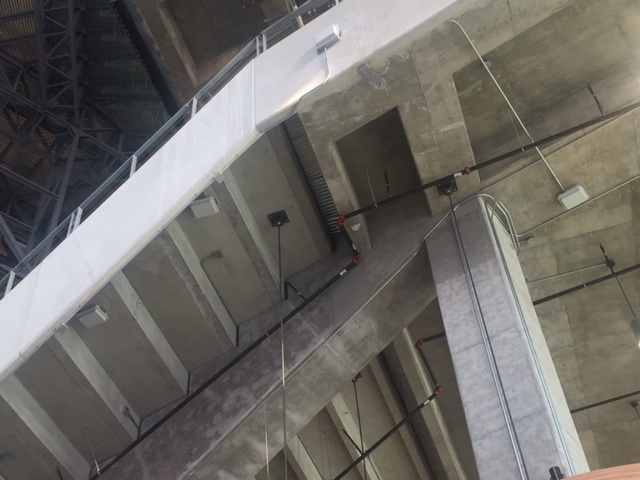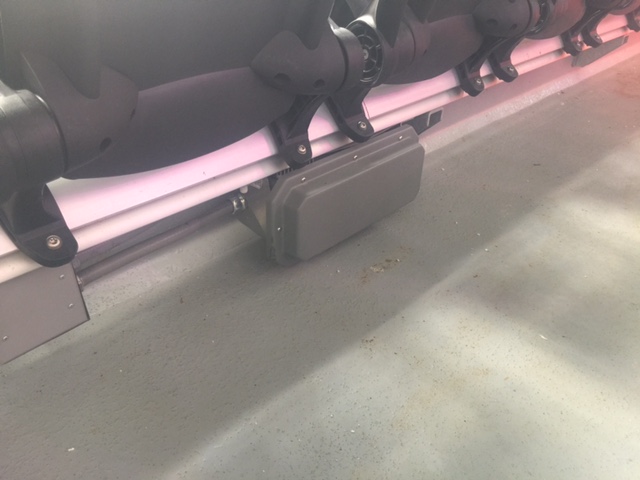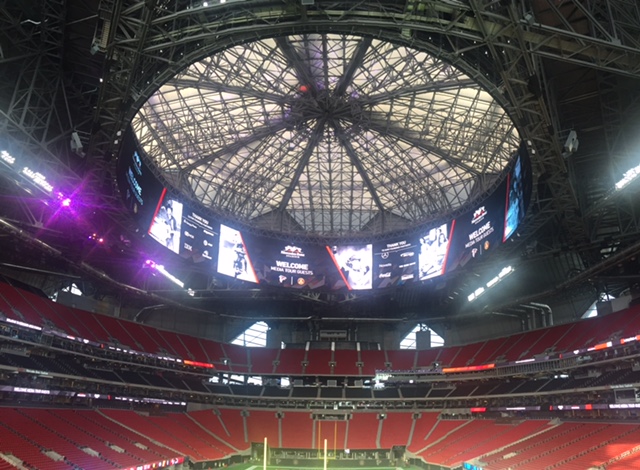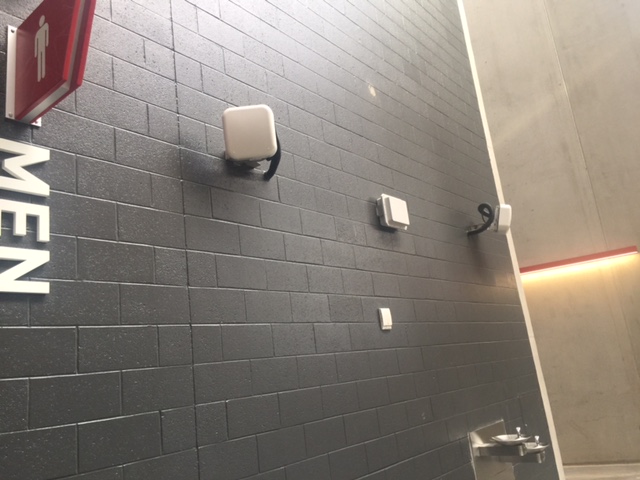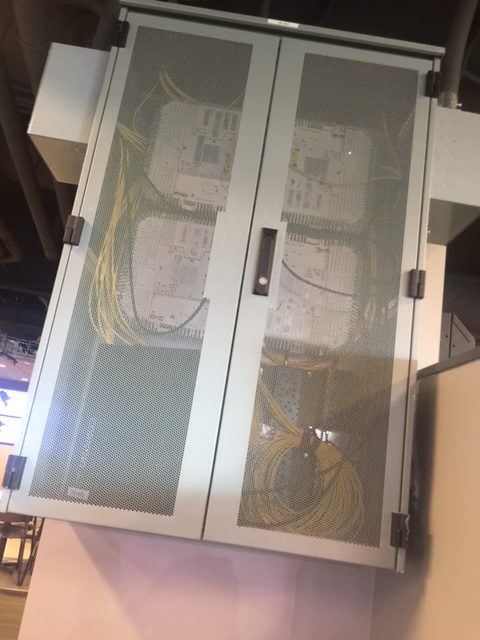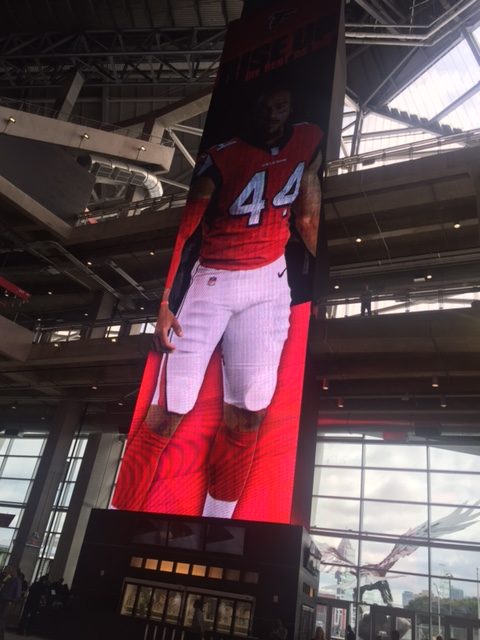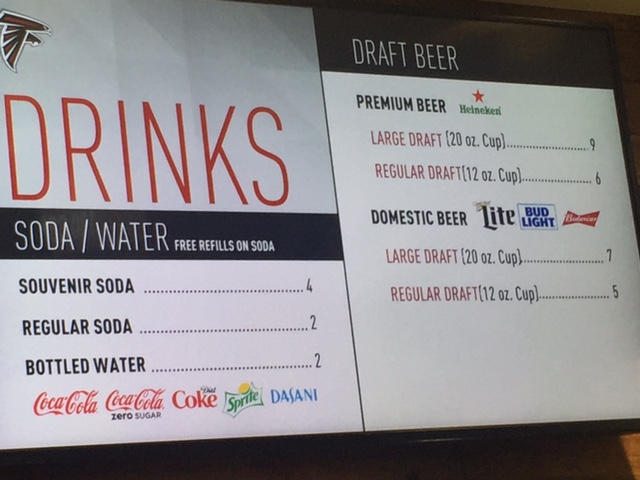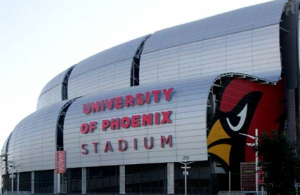— AT&T Stadium, already the location of the biggest (by number of APs) stadium network we know of, is in the process of adding another 667 APs, a project scheduled to be finished in the next few weeks. According to John Winborn, CIO for the Dallas Cowboys Football Club, the new APs are all the Cisco 3800 two-radio models, and will be installed on the stadium’s 400-level seating area.
When done, AT&T Stadium will have 2,567 APs, with plans to add another 400 in the upcoming offseason. After that, said Winborn, AT&T Stadium will “be out of locations in the stadium to place additional APs without additional spectrum opening up.” (editor’s note: This post has been updated to correct an error in reporting that previously stated that 600 new APs had been installed.)
— In Atlanta, the fans are getting ready for the first regular-season game at the new Mercedes-Benz Stadium, which will have nearly 1,800 APs total, many of those under the seats in the bowl.
— As previously reported in MSR, Denver’s Sports Authority Field at Mile High is in the process of ripping and replacing its former Wi-Fi network, installing 1,470 new Cisco 3800s in a project scheduled for completion by late October/early November.
— In Philadephia, Lincoln Financial Field is in the process of switching from an Extreme Networks deployment to a new one using Wi-Fi gear from Panasonic. More details on this project are promised later this fall.
— In Seattle, the Seahawks’ IT team is adding additional APs to improve coverage in the four corners of the upper seating sections of CenturyLink Field, according to Chip Suttles, vice president of technology for the Seahawks. Suttles said a full offseason tuning assessment with gear provider Extreme Networks also saw a new channel plan put in place, and “multiple Wi-Fi antenna orientations to improve coverage.”
— Detroit’s Ford Field also got a Wi-Fi (and DAS) upgrade over the past offseason, a revamp that will now allow all visitors, and not just Verizon Wireless customers, to use the stadium Wi-Fi.
— Chicago Bears fans will finally have free Wi-Fi this season, after being forced to pay for access previously.
— Following the announcement that the Arizona Cardinals were switching from CDW to Cox Business as the exclusive technology provider for the University of Phoenix Stadium, the UoP Stadium network was set for some additional APs and some network tuning ahead of the NFL season, according to Mark Feller, vice president of technology for the Cardinals.
Anyone else we miss? Send us the info… and the speedtests!
